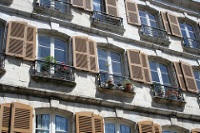
The popular holiday destination of Bayonne is the capital of Basque country, and a beautifully preserved cathedral city. Its narrow streets - lined with half-timbered houses - are atmospheric and perfect for exploring on foot. Bayonne is divided by the Nive and Adour rivers and is set between the mountains and the sea a few miles up the coast. Together with adjoining Anglet and Biarritz it forms the continuous urban area known as BAB.The city's most striking landmark is the magnificent gothic Cathédrale Ste-Marie, dating from the 13th century. Bayonne also has two museums well worth visiting: Le Musée Basque, which showcases the traditions, architecture, and decorative arts of the Basque region; and Le Musée Bonnat, which displays thousands of drawings and paintings from the 16th to 19th centuries, including works by Rubens, Greco and Ingres.The Bayonne Festival takes place every year for five days from the first Wednesday in August and is an explosion of activity with cow races, bull fights in the Roman arena, candle-lit processions and marching bands. Bayonne is well-known for its chocolates, marzipan and prime-smoked ham, all of which is available at the wonderful Covered Market. And according to tradition, if not historically verified fact, the bayonet was invented here in the 1600s.
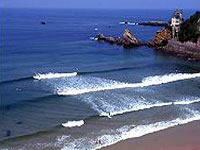
The holiday destination of Biarritz became famous in the 19th century when Empress Eugenie (the wife of Napoleon III) fell in love with this part of the Basque country and built a palace on the beach (now the world-class Hotel du Palais) and a centre with natural springs at Eugenie les Bains.Biarritz is now a luxurious seaside tourist resort. The main beach Grande Plage offers striped 1920s-style beach tents for hire. After a morning relaxing in the sun, visitors can take in the fine collection of Asian art at the Asiatica Museum (acknowledged as the finest collection of its kind outside Paris) or wander through the Halles market hall. Also worth a look is the famous blue dome of the Russian Orthodox Church, built in the 19th century for visiting aristocrats. Families will enjoy the sharks and seals living at the Museum of the Sea aquarium. Nightlife revolves around the two large casinos, Barriere and Bellevue.Biarritz has good sporting facilities, including some excellent golf courses and some of the best surfing in France. Each summer, surfers from all over the world come to Biarritz to ride the waves at the annual Surf Festival. Those after more gentle exercise while on holiday opt to stroll along Biarritz's principal promenade, Quai de la Grande Plage.
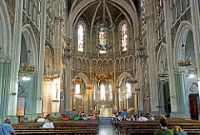
Not strictly Basque country, but part of the nearby Bigorre region, the town of Lourdes is situated in the Hautes-Pyrénées and has been one of the great Roman Catholic pilgrimage sites since the Virgin Mary allegedly revealed herself to a shepherd girl, Bernadette Soubirous, in 1858. More than five million pilgrims visit the town each year, particularly in August, from the Catholic nobility to the poverty-stricken sick and ailing.Pilgrims are sometimes offended by the commercialisation of the shrine (there is a very good trade in candles and Lourdes water) but miracle cures have been documented by the church so it can be assumed this exploitation does not affect the healing properties of the spring in which the afflicted bathe in a grotto. The Virgin is said to have appeared 18 times at the Grotto of Massabielle and mass takes place here every day.Lourdes itself is ancient and includes several sights of interest for holiday visitors. The Fortified Castle was successively a military fortress, a state prison and, in the 16th and 17th centuries, the residence of the counts of Bigorre. There are wonderful panoramic views of Lourdes town and the sanctuary from high on the fortifications. Since 1921 the castle has housed the Musée Pyrénéen, which exhibits the art, traditions and history of the Pyrénées.There are some interesting churches to see while on holiday in this religious town. The Upper Basilica of the Immaculate Conception was built in 1854; the inside is as impressive as the magnificent exterior. The oval Basilica of Pius X is one of the world's largest churches, its underground chamber can hold as many as 20,000 people. Mass is held in six languages, including English, every Wednesday and Sunday at 3:30pm from April to October. The Musée Ste-Bernadette is nearby, as is the house where Bernadette was born which, along with the home of her parents, has become a shrine.
The popular holiday destination of Pau is situated 50 miles (80km) inland, high above the Gave de Pau River, and is a good base from which to explore the Pyrénées and the picturesque little villages of the Bearn region. This year-round holiday resort was frequented by the British in the early 19th century (at one time 20 percent of the population hailed from England) and many customs were imported from across the Channel to become entrenched, including fox hunting and afternoon tea.Pau is home to 85,000 people and is the most cosmopolitan city in the western Pyrénées. While on holiday, panoramic views can best be enjoyed when strolling along the Boulevard des Pyrénées. Worthy Pau sightseeing excursions include the 12th-century Chateau de Pau, containing some interesting contemporary artefacts including a crib fashioned from a single tortoise shell. The Musée des Beaux-Arts is also worth a peek, with a collection of European paintings by the likes of El Greco, Degas, Zurbaran and Boudin. The people of the Pau and Bearn are very proud of their language (a variation of Occitan) and heritage and have indulged in friendly rivalry with the Basques of Bayonne for centuries.
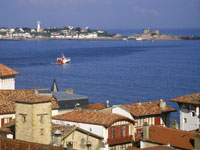
Saint Jean de Luz is a lively and cosmopolitan town to visit. The lovely medieval town centre has been influenced by Spain and the Moors over the centuries and offers a charming mix of interesting architecture spread along the narrow streets, blending old and new buildings. Considered one of the most attractive cities in Basque country, the beaches, shops, spas and other attractions draw hordes of local and international tourists to this spot just above the Spanish border.Saint Jean de Luz is an active fishing port, and seafood is a local specialty with fresh sardines, tuna, and anchovies available in abundance. Some of the best seafood restaurants in the region are around the town's main square.The beach is well-equipped for sunbathing and watersports, and there is good surfing at Lafitenia Beach. There are many small museums, aquariums, caves, and interesting architectural sights in Saint Jean de Luz, including the Chateau d'Arturbie, with its castle and manicured gardens. La Maison Louis XIV has rich collections of antiques and collectibles, as well as wax figures of important 17th-century people. The lighthouse at Pointe Ste.-Barbe offers fantastic views of the area.The pedestrian avenue Rue Gambetta provides the best shopping in St Jean de Luz, and visitors will find everything from clothes and linens to leather goods and books. The newer, more commercial end of Saint Jean de Luz is littered with chic shops and boutiques. Popular souvenirs include delectable chocolates and candies like nougat and tourons.
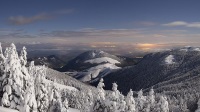
The wild mountains of the Pyrénées stretch for 250 miles (402km) from the Atlantic to the Mediterranean and have for many centuries formed a natural frontier, physical, climatic and linguistic, between France and Spain. Second only to the Alps among the great mountain ranges of Western Europe, the Pyrénées are much less frequented, and still offer an exciting combination of knife-edged summits, small glaciers, forested valleys, mountain tarns and little-trodden summer passes. Splendid trails lead to the magnificent cirques and lake-spangled basins of France's Pyrénées National Park. Over on the Spanish side paths lead through the spectacular canyons of the Ordesa-Monte Perdido National Park, one of Europe's oldest nature reserves.In 1997, the United Nations inscribed a portion of the French and Spanish Pyrénées near the French village of Gavarnie and the Spanish village of Torla on its list of World Heritage Sites. Here, nature over the eons has carved three stupendous glacial cirques, including the renowned Cirque de Gavarnie, and a 3,000-foot (914m) deep canyon called Ordesa - Spain's 'Grand Canyon.' Hiking in this region is very rewarding and the dramatic landscapes are breathtaking. Although some of the trails require hiking experience and fitness, visitors can also find easy day-walks.

Travel Guide powered by Word Travels, copyright © 2023 Globe Media Ltd. By its very nature information in this travel guide is subject to change at short notice and travellers are urged to verify information on which they're relying with the relevant authorities. Neither Globe Media Ltd nor Travel Vogue can accept any responsibility for any loss or inconvenience to any person as a result of information contained above.